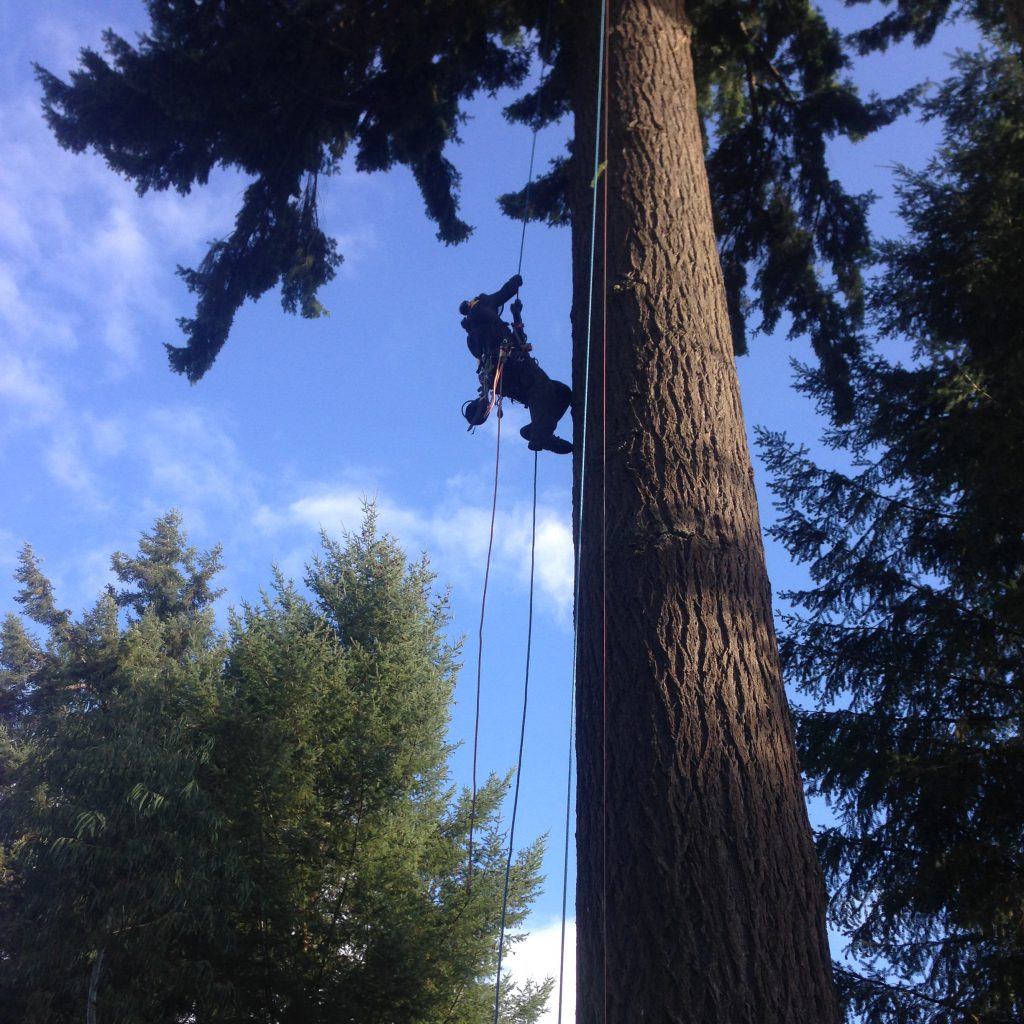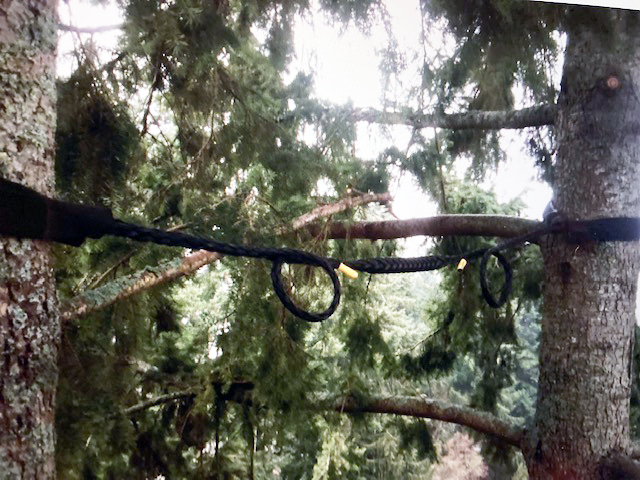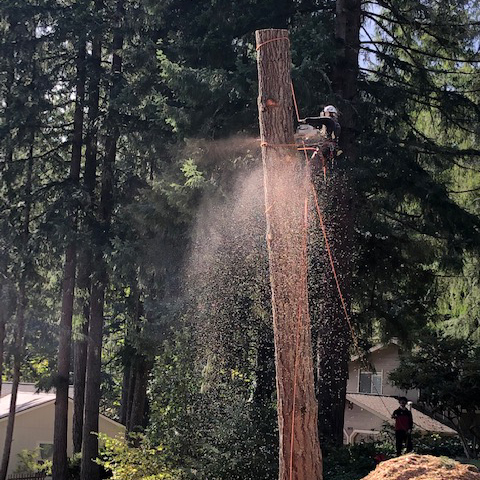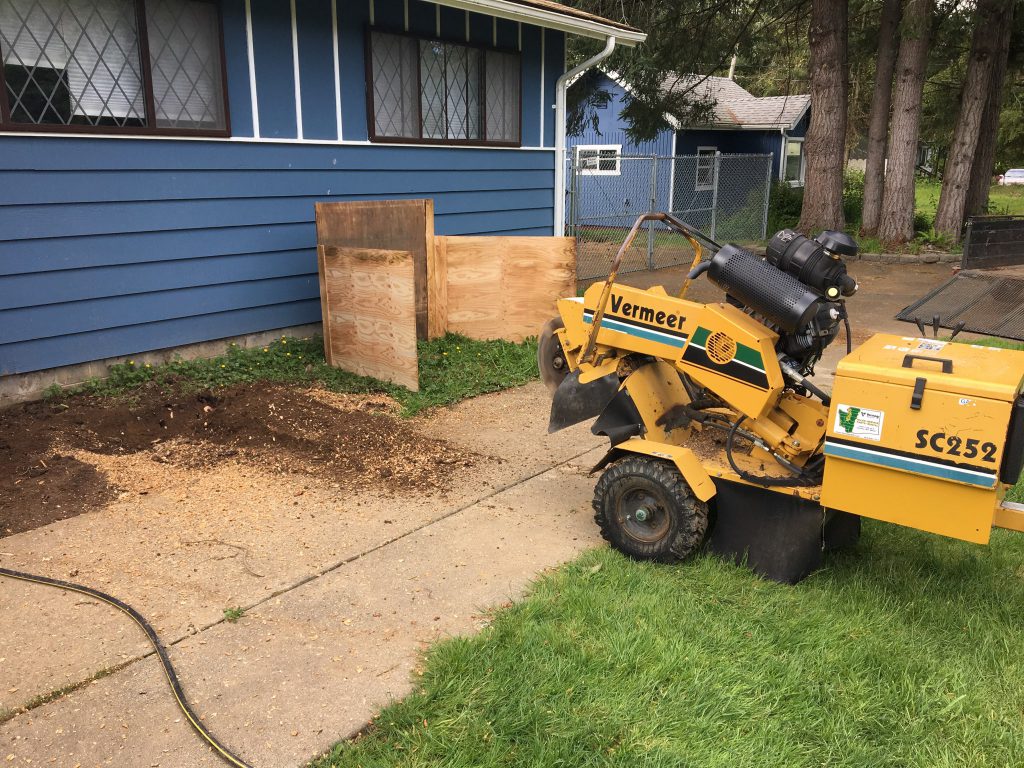Arborist Serving Olympia, Lacey, Tumwater & Thurston County
Pruning
Types of Pruning
End Weight Reduction
Reduces the weight at the end of the branch to prevent failure under the weight of snow, ice, rain or dense vegetation. This practice is often necessary when attempting to preserve and prolong the life of mature trees.
Crown Raising
A gentle raising of the trees lowest limbs (bringing more visibility to a sign, clearing utility lines, or roof of a home or garage/shed or to enhance a natural view).
Restorative
When incorrect pruning has occurred, restorative pruning is the method to take. Over the course of a couple of years, restorative pruning begins bringing a more natural form back to a tree. Most often restorative pruning follows tree topping or severe reduction pruning, which is unsightly and detrimental to long term tree health and safety. Often times there is hope yet for an improperly pruned tree! It just takes a little time and belief in the process.
Crown Cleaning/Thinning
Removes dead, weak, rubbing or diseased branches as well as opening up the shaded crown of a tree. This allows the remaining branches to thrive and grow with optimal structural strength and also brings light into the canopy of a tree increasing interior foliage and aiding in disease control via light and air flow.
All pruning is done in accordance with ISA and ANSI standards. Our staff has a keen understanding of proper pruning techniques and tree science and is well trained to address the specific and diverse needs that each tree may have. Only practices which benefit and address long term safety, health, beauty, fruit production, etc. are carried out unless removal is warranted.
We work on trees of all sizes. Ornamentals, fruit, mature natives, or prize cultivars are all within our scope of practice. There is no tree too delicate and small or to tall and technical for us to properly prune. Beyond work carried out in the tree we are dedicated to safe and efficient work practices and respectful and clear communication between clients and employees alike. We believe the client should be clearly informed of how the finished tree will look and the reasons why specific practices will be performed.
There are a number of forms of pruning and a reason for each. See the info box on pruning types for more details.
Consultation
A consultation can more thoroughly answer client’s questions and hopefully give a sense of knowledge and involvement about the trees and plants in the landscape and how to best care for them. While there are plenty of times when a brief estimate is appropriate, when unsure of how to proceed with the specific care of trees or shrubs, a more detailed consultation is advised.
Cabling/Bracing
Trees with structural defects, multiple tops or weak branch attachments can benefit from cabling. Trees add monetary and sentimental value to a property/environment as well as acting as environmental filters and sound buffers in the urban setting. When applied correctly, cabling can bring more stability and safety to an environment and its inhabitants by mitigating the potential of failure. In most cases it also increases longevity of the tree in question.
Please note that if tree cabling is done, it is very important to revisit the cable(s) installed on a routine basis (approximately every 2 years). Failure to do so can be counterproductive as cables may girdle trunks/limbs and need adjusting to account for growth, etc. To see the effects of trees not inspected routinely see Gallery.
Removal
If a tree issue cannot resolved through pruning, fertilization, cabling, etc., removal may be the next step. While our goal is to preserve and keep trees in the landscape, there are situations when a tree has been planted in the wrong place, is diseased or structurally unstable and compromises safety.




